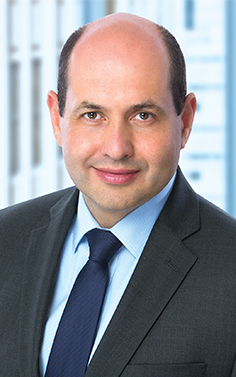Digital is not strategy only, it is strategy and a delivery vehicle, BNY Mellon’s head of digital tells Joy Macknight.
There are three common digital strategies, according to Roman Regelman, head of digital at BNY Mellon. “One is the Silicon Valley variety: experimenting and building some cool toys, but fundamentally not affecting the core. The second type is a parallel bank, which kind of works well in theory but then, at one point, issues arise over integration,” he explains. “The third is what we are doing here: digitising the existing bank – all our products, services and processes – and raising the collective digital IQ.”
Career history: Roman Regelman
2018 BNY Mellon, senior executive vice-president, head of digital
2011 Boston Consulting Group, partner and managing director
2006 Strategy&, partner
2004 Bain & Company, manager
The global investments company’s digital transformation strategy is broken down into ‘horizons’, which are worked on concurrently. Horizon 1 is digitising everything BNY Mellon does today, such as its core processes, products and services. “We are eliminating paper, reducing manual hand-offs and replacing person-to-person interactions with machine-to-machine connections,” says Mr Regelman.
Horizon 2 is about reimagining the end-to-end client journey, while Horizon 3 covers launching new services and businesses. “Quite often these new businesses are digital first and utilise client data, as well as external data such as weather, traffic and social sentiment,” says Mr Regelman. “We then bring the insights back to our clients.”
Charting a digital course
BNY Mellon is a “235-year-old tanker”, according to Mr Regelman, with great trust and security. “We are speeding it up and turning it, but we are also sending some speedboats down the ramp. These are our innovation centres and the projects that create disruptive solutions.”
The bank has nine innovation centres around the world. “The centres are great places to work for our cross-functional teams because they allow greater collaboration and client involvement,” he says. “And each centre is unique. For example, the Singapore centre has an extensive relationship with the government and the Asian ecosystem; the Silicon Valley one is connected to the tech community; and the London centre is in the heart of the financial industry.”
The centres are not experimenting with emerging technologies but are using such technology to drive the bank’s digital agenda. Mr Regelman is certain, however, that a digital agenda is not just about technology but also about different ways of working internally and with clients. “It is a different mindset to truly unlock the power of our enterprise for the client,” he says.
Culture change
Mr Regelman believes that BNY Mellon is proving quite successful at changing its culture, mindset and working methods. For the past six months, several teams have been working in a cross-functional way. “These aren’t study groups – they are delivery vehicles. These teams simultaneously envision or reimagine the core things we do and drive rapid change,” he says.
This differentiates BNY Mellon’s approach from a typical corporate environment, where study groups’ projects end with a PowerPoint presentation for the steering committee. Once approved, other people do the project implementation. “We are breaking that bottleneck,” says Mr Regelman. “The people that envision a solution are also implementing, which gives them a different sense of ownership. And it is really changing – I feel it.”
Additionally, BNY Mellon is embracing clients in a different way. “Companies talk about being client-centric but usually that means interviewing clients, writing down what they want and implementing exactly that. However, I don’t believe that blindly following the client is client-centric,” says Mr Regelman. “Showing our expertise to the client and leading them – listening to them but leading them – is what is important.”
Working together
As part of its digital agenda, BNY Mellon embraces an open ecosystem. “We don’t believe in a closed end-to-end pipe, where the client must have our solutions, our data, our technology no matter what. We want to orchestrate things for them, which sometimes requires us to work with competitors, fintechs and other players,” says Mr Regelman.
The bank has a digital partnership group, under his supervision, which works with fintechs and tech companies, as well as with multiple venture capital and private equity firms. “The group champions fintechs internally, as well as champions our agenda in the fintech, venture capital and private equity community,” says Mr Regelman.
BNY Mellon is collaborating with more than 100 fintechs. As such, Mr Regelman is not overly concerned about fintechs acting as competitors. “They aren’t going to take over our industry," he says. "We are 235 years old, we have trust, integrity, clients and regulators that know what we do. Fintechs can take small bits and pieces of the value chain, which is a bit of a threat, but it is also a much greater opportunity because we don’t need to create these things ourselves.”
While technology is a big part of digital, Mr Regelman believes that culture is the biggest change that underpins it. “All 52,000 BNY Mellon employees are driving the digital agenda,” he says. “Digital comes down to the way we put clients in the middle of everything we do, how we bring the enterprise to the client, how we bring the world and its power to the client, and how we build the ecosystems to deliver great experiences.”



